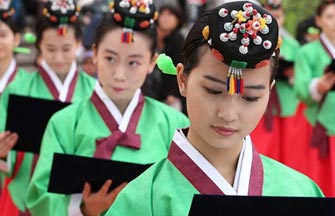European publishers eye China lit
By Chen Yingqun ( China Daily ) Updated: 2014-07-09 07:26:49
"There's still a long way to go for Chinese publishers, I think. It is still not very common to travel a lot. And to do international business, you have to build up your own network and you have to build up trust, and this will take a lot of time. It is not enough to go once a year somewhere outside China."
Boos says that in Germany about 80 percent of imported works are from English-speaking countries. Few are from China.
Mo Yan's books have been translated, mainly because he is a Nobel prizewinning author, he says. "The situation only improves when things like this happen."
Challenges include the market, because publishers focused on profits go for safe belts. Because of Europe's cultural similarities, for example, a book successful in Germany will be easier to publish in France as well. But it may be very difficult to publish the same book in China.
Translation can be another problem, he says. Translation of literature requires higher skills than for more basic or academic texts. There is a lack of talented translators who have mastered both Chinese and German.
Boos says he saw more serious intentions to work together among Chinese and German publishers during his visit. Plans were not limited to the trade in copyrights like before, he says. There was also a good amount of discussion about their own markets.
"When we discussed, what everybody was interested in was applied arts, such as economics and technology," Boos says.
"It is very easy for these books to travel across cultures because many people are interested in the development of design in China.
"So it is about getting to know each other and getting to know the needs of the market."
At next year's Frankfurt Book Fair, Asian publishers will be moved from a marginal area to a more central location, Boos says, and participating countries will be grouped together. In the past, pavilions for different Asian countries have been a half-hour walk apart.
Grouping geographical areas is expected to promote synergy, he says.
|
|
|
|
|
|
|
|
























 Raymond Zhou:
Raymond Zhou: Pauline D Loh:
Pauline D Loh: Hot Pot
Hot Pot Eco China
Eco China China Dream
China Dream China Face
China Face





